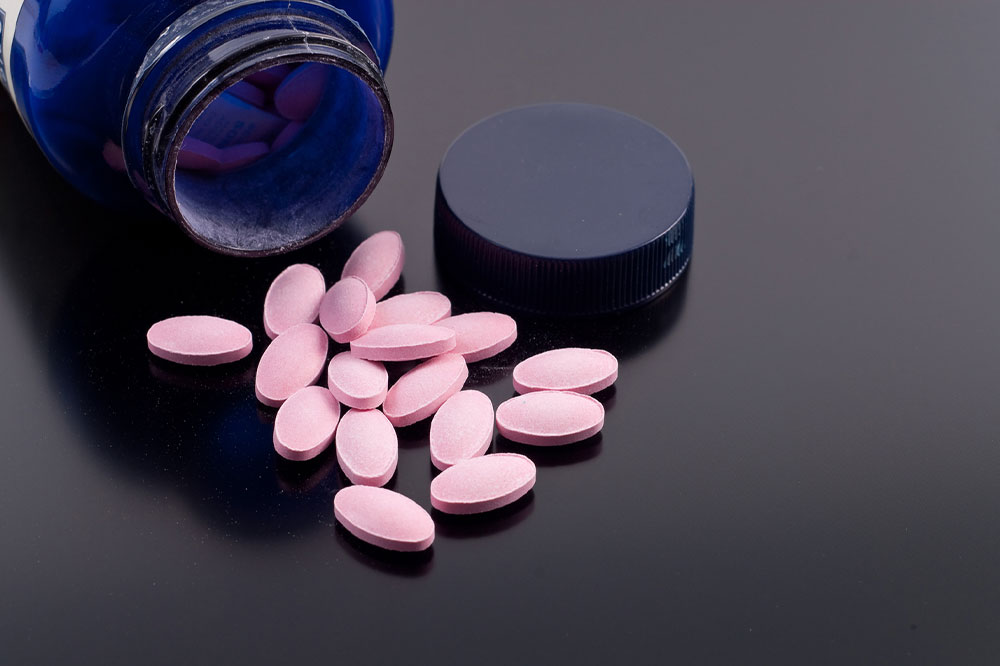9 Supplements That Help in Managing Eczema

Eczema, also known as atopic dermatitis, is a common inflammatory skin disorder that makes the skin become dry, itchy, flushed, rough, red, cracked, or bumpy. Eczema flares can be brought on by allergies, a hyperactive immune system, irritants, harsh weather, hormonal imbalances, stress, or mental disorders. While its severity varies from person to person, some supplements can be safe and effective additions to overall eczema health care and help control the flare-ups.
Top supplements
Deficiencies of essential nutrients play a major role in worsening one’s eczema symptoms. Based on the doctor’s advice, one can include the following supplements in addition to food in one’s daily nutritional regimen to help manage eczema:
Vitamin D
One’s skin produces vitamin D when exposed to the sun. Several foods naturally contain vitamin D, and it is also widely available as a supplement. Certain studies have shown a direct correlation between vitamin D and eczema. One evaluation found that it helped lower the severity of eczema symptoms, while another study indicated a link between lower vitamin D levels with increased eczema severity in children. Around two-thirds of the investigations suggested that taking vitamin D supplements is beneficial for treating inflammation.
Vitamin E
Vitamin E is an essential micronutrient that features in many skin care products. This vitamin is capable of shielding the skin from oxidative stress. Certain studies have discovered that it is not only safe and beneficial for normal skin, but it might also help in easing eczema flare-ups. In a 4-month study by an Iranian institute, participants with eczema symptoms were split into two groups. The one that took 400 IU of vitamin E daily had significant reductions in the severity of their eczema and its accompanying symptoms, such as itching, compared to another group that received placebo treatment.
Vitamin A
Skin problems like eczema may be brought on by a lack of vitamin A in the body. The nutrient heals, repairs, and creates new skin cells and supports the skin’s ability to combat eczema-related skin irritation and inflammation. One may experience skin barrier damage and be more likely to develop eczema when affected by vitamin A deficiency. So, to avoid skin issues and deal with eczema, one can opt for supplements or foods high in vitamin A, such as carrots, broccoli, and sweet red peppers.
Vitamin C
One of the most effective antioxidants for preserving skin barriers and preventing skin diseases is vitamin C. Additionally, vitamin C contributes to the maintenance of the skin’s hydration and pH balance by helping prevent water loss from the skin. For the epidermal skin layers, a concentration of 65–100 grams is particularly useful.
Evening primrose oil and borage oil
Two natural supplements commonly promoted as treatment options for eczema are primrose oil and borage seed oil. Both are high in gamma-linolenic acid (GLA), which is a type of omega-6 fatty acid. A body that’s deficient in essential fatty acids is more prone to eczema flare-ups. While some omega-6 fatty acids—like linoleic and arachidonic acids—promote inflammation, GLA does the opposite. So, opting for evening primrose oil may reduce inflammation and avoid blood clotting.
Fish oil and omega-3 fatty acids
Omega-3 fatty acids are known for their strong anti-inflammatory qualities. They are found in large quantities in fish oil, which can help soothe dry and itchy skin. Research to establish the link is ongoing, but many studies have demonstrated the benefits of fish oil supplements for people with inflammatory illnesses. Additionally, it is considered to be a safe option for most people.
Probiotics
Human gastrointestinal tract houses trillions of bacteria. While good bacteria promote healthy digestion, strengthen the immune system, and support overall health, certain types of bacteria can cause eczema and skin irritation. One way to enhance one’s gut microbiome and reduce eczema symptoms is to opt for foods rich in probiotics or probiotic supplements. The effect of probiotics differs from person to person, but largely they have been proven to improve skin condition and hydrate it within months after regular consumption. It can take some trial and error to narrow down the probiotic supplement that best suits one’s body. So it is advisable to talk to one’s dermatologist before choosing this supplement.
Lactobacillus and Bifidobacterium: Amongst the variety of probiotic supplements currently available, Lactobacillus and Bifidobacteria are a class of probiotic bacteria that are used extensively in healthcare. They aid the human body in carrying out vital processes like breaking down food, absorbing nutrients, and starving harmful bacteria. Many studies have shown that these mixed strains help significantly prevent eczema symptoms like itching and sleeplessness, especially in children.
Melatonin
Melatonin is more commonly used as a sleep supplement, but studies have shown that it can also help treat eczema. It regulates one’s sleep cycle and body temperature and functions as an antioxidant that improves skin hydration levels. So, it can help in kicking off anti-inflammatory activities and reduce eczema flare-ups that tend to keep a person awake at night.
Collagen
Supplements containing collagen improve skin health and shield it from irritation, itching, and other unpleasant symptoms. It improves skin moisture and maintains one’s pH levels. Collagen supplements can have remarkable positive results for the skin when paired with zinc and vitamin C.
It is critical to look for supplements that have been validated by clinical studies and do not contain any potentially dangerous irritants or allergens. If a supplement aggravates one’s allergies, it would not be successful in relieving eczema symptoms. It is also advisable to discuss the most suitable supplements with one’s dermatologist. An expert healthcare professional may recommend a different course of treatment for one’s eczema, severe or otherwise, after carefully considering their history of allergies and specific skin problems.






